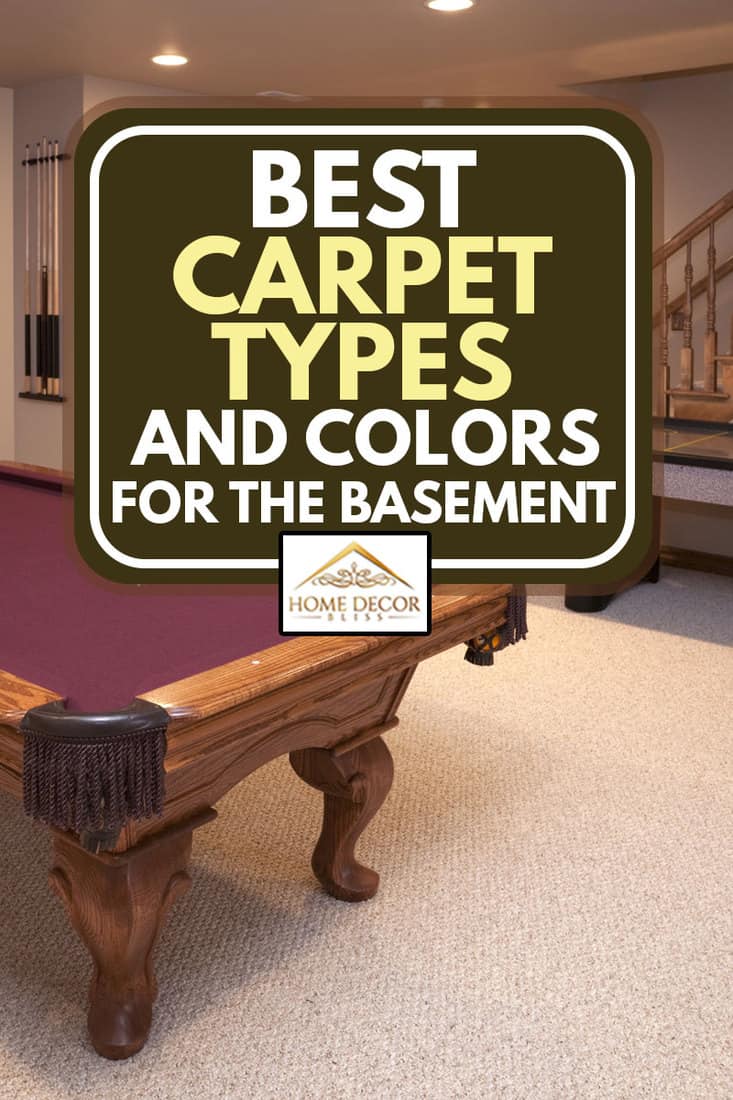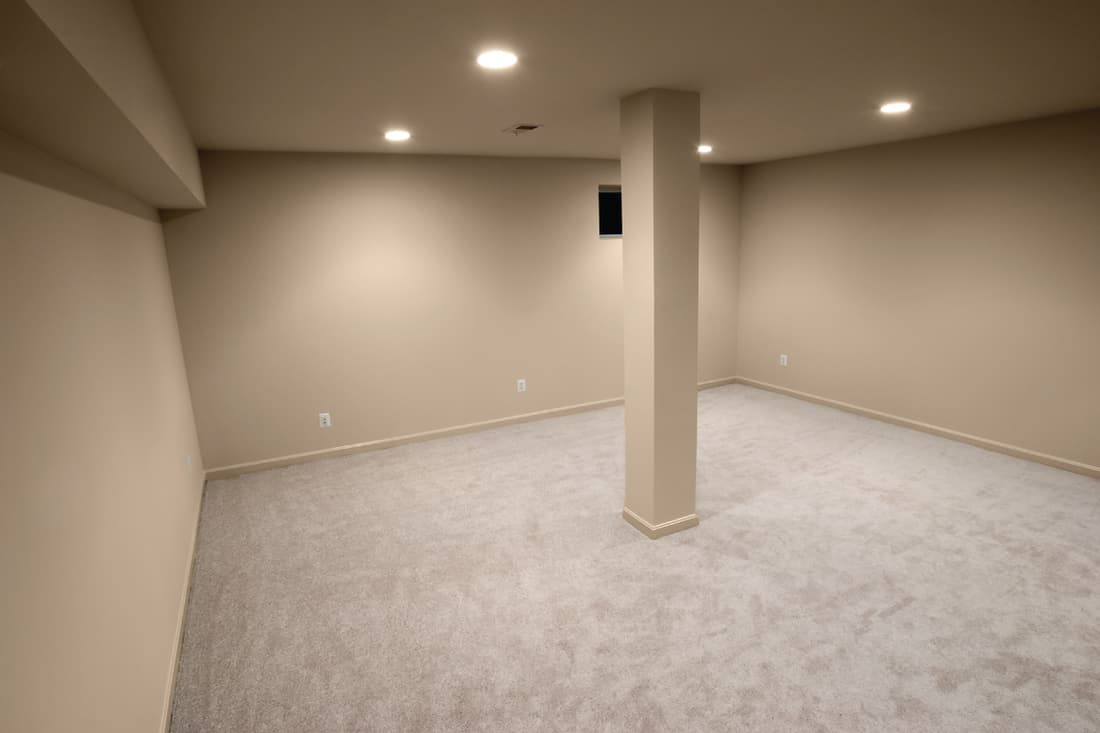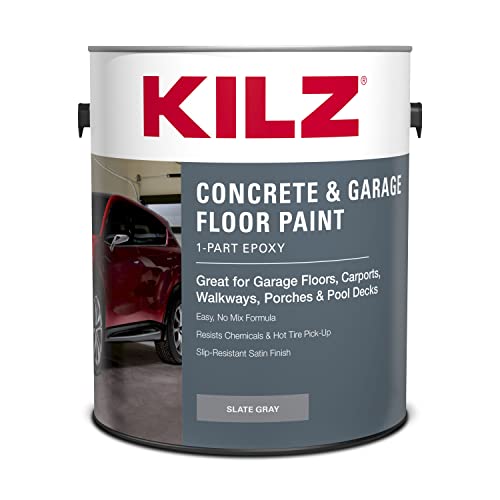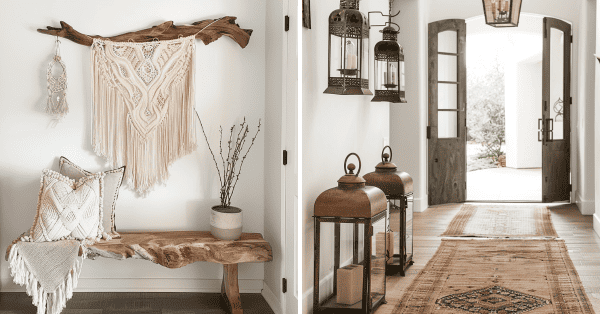Adding carpet can seem daunting yet very desirable when upgrading the basement. You may think that adding a carpet is a bad idea but would like to add character to the room with one. We've researched the best carpets to help you narrow down your choices for the best one in your basement.
The best carpet fiber for a basement is made with synthetic material, as synthetics repels water and dries out very quickly. Natural fibers tend to retain moisture and are not ideal for the basement.
There are multiple colors and styles for you to select. In this post, we'll explore all the options for carpet in the basement. We'll also cover other common basement carpeting questions. So be sure to keep reading.

The Best Carpet For The Basement
There are plenty of fibers, textures, colors, patterns, and coverage options from which you can choose. Let's explore each one.
Fiber Styles
Make sure the entire carpet, including the backing, is made of synthetic materials. Avoid carpet backings that are created with jute, which holds onto moisture. Synthetic carpet will fade in the sun, but since it's going in the basement, fading will not be an issue.
Look for a low-pile carpet. The pile is the measurement of the thickness of the rug. Low-pile carpets take less time to dry out in water damage occurrences. For more on carpet pile, read What Is Considered High Pile Carpet?
Nylon Fibers
Use a nylon carpet in a basement that is intended for light entertainment. High traffic tends to wear nylon carpet out faster, and spills are hard to remove.
Polyester Fibers
Polyester works well in a low traffic basement. It is thinner than nylon and tends to flatten after a few months of heavy use. Use it in basements that are used mostly for storage. It is cheaper to replace in areas where there is a high likelihood of water issues.
Olefin Fiber
Olefin wicks away moisture and does not generate static. It repels stains and is ideal for light entertainment or light use basements. Olefin mimics the look of wool carpet and has many options that will fit in with your décor.
Triexta Fibers
Triexta gives the durability and appearance of nylon. It has the moisture and stain resistance of polyester. It is plush, which supports foot traffic when installed over the concrete floor of the basement. Triexta is excellent for heavy traffic basements and entertaining.
Textures
Carpet textures are based on how the carpet's fiber is attached to the backing of the carpet. There are three main carpet textures.
Cut Pile
The yarn is cut at the ends, making the carpet feel soft. It is best for rooms that are used for comfortable living.
Five styles of cut pile carpet include Velvet, Saxony, Frieze, Shag, and Cable. Each has various characteristics to create a different look and texture. Make sure to go for a low-pile that will not retain a lot of moisture.
Loop
Yarns are looped and uncut on the surface. The pile height varies from low and tight to luxurious high-level piles. It is strong and hides dirt very well. Use a Berber style if your basement is going to be a high traffic area.
Cut-Loop
This carpet has a combination of high cut tufts and lower loops to create sculptured patterns. This texture is a good performance but is less durable than the loop carpets.
Colors
The carpet color can make the room seem large or small. Lighter colors can give the appearance of a larger, more open room while darker colors can make the space appear smaller.
Neutral
Neutral undertone carpets work best. They are the most forgiving and supportive of different decorating styles. Go with green, grey, and green beige as they have the most options on the color wheel. Avoid pink beiges as there are very few wall colors that go well with them.
Bold
Make a statement with multi-colored carpets to create a game room in your basement.
We may include affiliate links and curated AI content to highlight top design styles.
Click here to see these carpet tiles on Amazon.
Blues
Use blue carpet to create a quiet space for reflection. The softer the shade of the blue, the softer the room will feel.
Click here to see these carpet tiles on Amazon.
Grays
Gray gives a neutral backdrop so that the rest of the decor can be in any color and still look classy. There are so many shades of gray to pick from, so you certainly won't have an issue finding the right shade for the basement.
Click here to see these carpet tiles on Amazon.
Shades
Choose colors that are a few tones darker or lighter than your walls. Lighter will give an open feel, and darker will provide a close intimate feel. Be cautious with darker colors as they can also make a small basement feel smaller.
Read our article Should Carpet Be Lighter Or Darker Than Walls? for more details about how to experiment with color options.
Patterns
You can enhance your basement theme with the usage of carpet patterns. This is where you can really let your creativity flow to bring your basement design to fruition.
Moroccan
Moroccan blends ornate patterns, vivid colors, and gold and silver hues to create a worldly vibrancy. Use vivid reds, orange, blues, and greens.
Animal Print
Go with an animal theme for your basement. A leopard print works well with a bar-style room. Animal prints are bold, ensuring that your basement gets a fun upgrade.
Floral Prints
Bring a vintage and romantic look to your basement with floral printed carpet. From soft neutral to loud colors, you can find what you're looking for in floral prints. Didn't you know that floral patterns are super in-style now?
Coverage
While a one-piece wall-to-wall carpet is the easiest to install, if there is damage that can't be repaired, then the entire carpet has to be replaced.
A sectioned carpet works like tiles, and the "tile" that gets damaged can be replaced easily without removing the entire rug.
Click here to view these polyester carpet tiles on Amazon.
Take a look at our post about Can You Patch A Carpet? to view more details about how to fix a damaged carpet.
How Do You Prepare Your Basement For Carpet?
Basements have common issues that need to be addressed prior to installing the carpet. Moisture is caused due to a lack of airflow and because of the room's underground location.
Prevent carpet issues by waterproofing the basement to eliminate any existing water problems before installation. Fix any leaky gutters to prevent water buildup against the outer walls of the basement. Even if the basement floor is concrete, water can seep through the basement walls. Remove any humidity by adding a dehumidifier.
Click here to view this dehumidifier on Amazon.
Should You Seal Your Basement Floor Before Carpeting It?
It is a good idea to seal the basement before installing the carpet and carpet pad. The concrete is porous and will allow seepage. A sealant will prevent moisture leak-through and protect the floor.
An epoxy sealant penetrates deep into the concrete floor, doing a great job of protecting your basement.
Click here to view this epoxy floor paint on Amazon.
Urethane and acrylic sealers set quickly. So if you want a quicker option, opt for one of these.
Click here to view this sealer on Amazon.
Densifiers will prevent moisture from wicking to the surface of the floor. You'll typically only need to apply it once.
Click here to view this densifier on Amazon.
Do You Need A Vapor Barrier Under The Carpet In The Basement?
To prevent moisture from seeping up from the concrete subfloor into the carpet, install a vapor barrier between the subfloor and carpet.
Can You Lay Carpet Directly On Concrete?
Avoid this if possible, as the carpet creates a warm layer on top of the cold concrete, causing condensation to collect on the carpet's bottom. Use a rug barrier under the carpet to keep the dampness away. A barrier will support the carpet and take on a bit of wear and tear. The floor will not be comfortable to walk on with only a layer of the carpet.
Use a polyurethane foam pad between the vapor barrier and the carpet to provide comfort and warmth. The polyurethane will keep moisture at bay.
How Much Would It Cost To Carpet A Basement?

There is a price range due to the different materials included in carpet installation. Here's a breakdown for the home installer. It does not include any labor costs of hiring out to complete the project.
- Olefin carpet installations average $1.50 per square foot. Nylon carpet averages between $3.25 and $3.75 per square foot. Triexta is about $4.00 per square foot.
- For a 1,000 square feet basement, the cost range is between $7,000 and $12,000.
- A basement that is 1,200 square feet will cost between $8,400 to $14,400.
- If the room is 1,500 square feet, the price will range between $10,500 and $18,000.
- A 2,000 square foot basement will cost between $14,000 and $24,000.
Maintenance
Regularly vacuum and inspect the carpet for signs of mold or mildew. The nature of basements leads to a tendency towards mold. If you find any mold or mildew indications (put on some gloves, mask, and goggles), lift the carpet and see if the mold is on the padding. If it is, treat it with hot water and spray it with a disinfectant.
Run a wet vacuum over the padding until the water is gone to dry it out. Combine mild detergent with two tablespoons of white vinegar and two cups of water to spot-treat the carpet. Use the wet vacuum to remove any extra moisture. Never combine ammonia and bleach, as they create a harmful chemical reaction.
Alternative Flooring
There are other options besides carpet if you decide that carpet isn't going to be optimal.
Vinyl Tiles
Vinyl tiles come in plank and square sizes that float on top of the subfloor in the same manner as a laminate floor. They are easy to install and have multiple designs that resemble natural wood and stone.
Marmoleum
Marmoleum is made with linseed oil, limestone, wood flour, and jute. It comes in sheets and tiles with many colors and patterns that go well with the basement decor.
Ceramic and Porcelain Tile
Tile works well in basements as it can be installed directly on the concrete subfloor and is entirely waterproof. The grout will need to be sealed regularly to prevent mildew. Do not install on a plywood subfloor since the plywood contracts and expands with the temperature changes and will crack the tiles.
Rubber Or Foam Mats
Use rubber or foam mats for a softer basement floor. They're best for a basement gym. They have interlocking edges to hold the mats together for ease of installation.
Concrete Flooring
There is also the option not to cover the concrete subfloor at all. The concrete can be stained, painted, or covered with an epoxy coating.
In Closing

We have discovered that the best carpet for any basements will have a nylon fiber. There are options for nylon, polyester, Olefin, and Triexta. These fibers reduce the risk of mold and dampness as they all dry quickly and do not retain liquid. With all these options, you're sure to find the perfect carpet for your basement!











